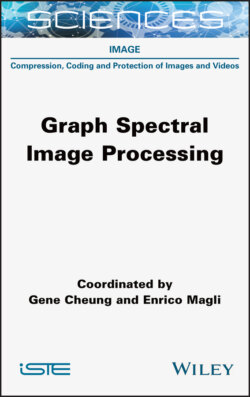Читать книгу Graph Spectral Image Processing - Gene Cheung - Страница 15
I.5. Graph signal smoothness priors
ОглавлениеTraditionally, for graph G with positive edge weights, signal x is considered smooth if each sample xi on node i is similar to samples xj on neighboring nodes j with large wi,j. In the graph frequency domain, it means that x mostly contains low graph frequency components, i.e. coefficients α = Ux are zeros (or mostly zeros) for high frequencies. The smoothest signal is the constant vector – the first eigenvector u1 for L, corresponding to the smallest eigenvalue λ1 = 0.
Mathematically, we can declare that a signal x is smooth if its graph Laplacian regularizer (GLR) xLx is small (Pang and Cheung 2017). GLR can be expressed as:
[I.3]
Because L is PSD, xLx is lower bounded by 0 and achieved when x = cu1 for some scalar constant c. One can also define GLR using the normalized graph Laplacian Ln instead of L, resulting in xLnx. The caveats is that the constant vector u1 – typically the most common signal in imaging – is no longer the first eigenvector, and thus .
In Chen et al. (2015), the adjacency matrix W is interpreted as a shift operator, and thus, graph signal smoothness is instead defined as the difference between a signal x and its shifted version Wx. Specifically, graph total variation (GTV) based on lp-norm is:
[I.4]
where λmax is the eigenvalue of W with the largest magnitude (also called the spectral radius), and p is a chosen integer. As a variant to equation [I.4], a quadratic smoothness prior is defined in Romano et al. (2017), using a row-stochastic version Wn = D−1W of the adjacency matrix W:
[I.5]
To avoid confusion, we will call equation [I.5] the graph shift variation (GSV) prior. GSV is easier to use in practice than GTV, since the computation of λmax is required for GTV. Note that GSV, as defined in equation [I.5], can also be used for signals on directed graphs.
